
QUAD 4: To conduct joint security in the South China Sea
・Japan, Australia, and India coast guard officers to board US patrol vessels from 2025
・US military to increase anti-ship guided bomb “Quicksink” to deter China
Summary from Katsumata Hisayoshi’s World View article.
China and the Philippines:
1. The Chinese military is causing friction with the Philippine military in the South China Sea.
2. It is clear that they are restraining the Philippines in preparation for a Taiwan emergency.
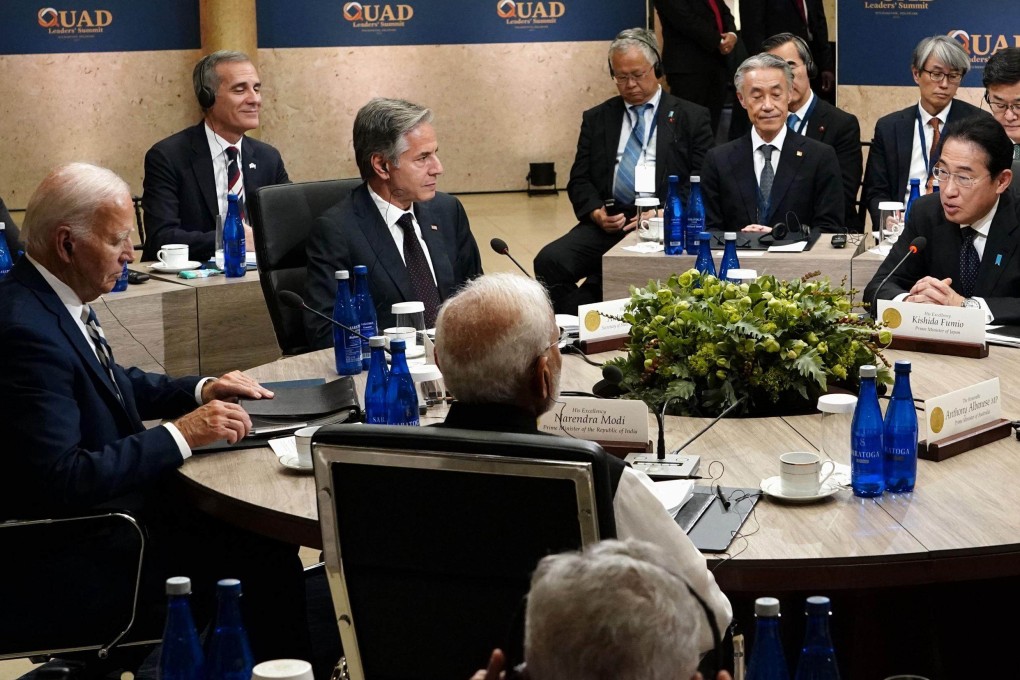
Quad regular meeting:
With these Chinese actions in mind, the leaders of the Quad (Japan, the US, Australia, and India) held a regular meeting in the United States on September 21.
Quad joint statement:
The Quad leaders issued a joint statement.
Regarding the situation in the South China Sea, where China is becoming more active,
1. We express serious concern over China’s dangerous and aggressive actions in the ocean.
2. Japan, the United States, Australia, and India aim to maintain and strengthen a rules-based maritime order.
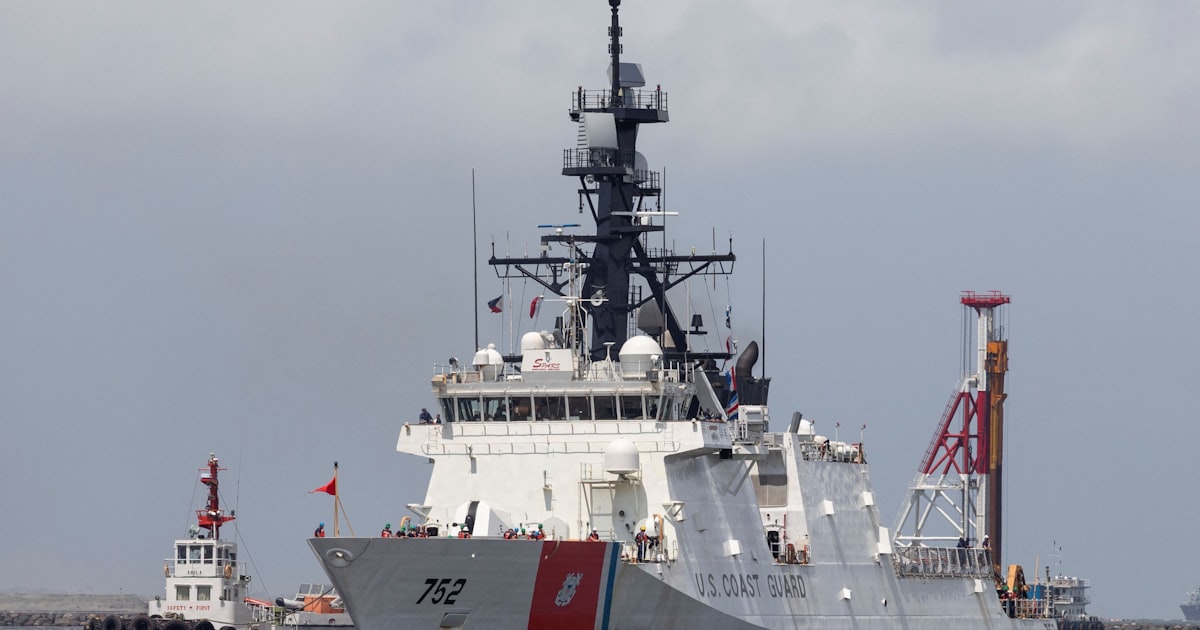
Boarding on US Coast Guard patrol vessels:
The purpose is to share the perceptions of the QUAD countries.
A new regional framework will be established for maritime security in the South China Sea.
1. Members of Japan, Australia, and India will board US Coast Guard patrol vessels from 2025.
2. Through joint actions, they will deepen cooperation with China’s strengthening maritime expansion in mind.
Nikkei Newspaper Online Edition: (September 22nd)
On September 18th, the US Navy announced its guidelines, “Voyage Plan 2024.”
It clearly states that they will prepare for the possibility of a war with China by 2027.
Lisa Franchetti, the top uniformed officer in the US Navy, emphasizes that “we will be more prepared.”

Reuters (September 22nd)
Published an article titled “US military to increase mass-produced anti-ship weapons in the Indo-Pacific.”
1. The US will increase its deterrent power against China in the Indo-Pacific region.
2. The US military will increase the number of mass-produced anti-ship weapons it possesses.
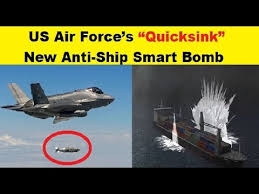
Introduction of the anti-ship guided bomb “Quicksink”:
The anti-ship guided bomb “Quicksink” is inexpensive and can be mass-produced.
1. “Quicksink” is equipped with a low-cost GPS guidance device.
2. It can also track moving targets with a seeker (target tracking device).
Success in developing an anti-ship guided bomb:
The US military has succeeded in developing an inexpensive anti-ship guided bomb that can track moving targets.
Last month, a test was successfully conducted in the Gulf of Mexico to fire a “Quicksink” at a ship from a stealth strategic bomber “B2.”
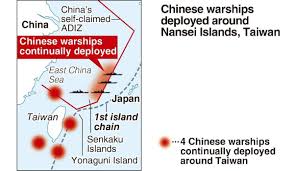
Deterring a Chinese invasion of Taiwan:
If China invades Taiwan, a large number of Chinese ships will be deployed.
The US Navy has a tactic of defeating them in the Taiwan Strait.
They are preparing a variety of attacks that also combine drones.
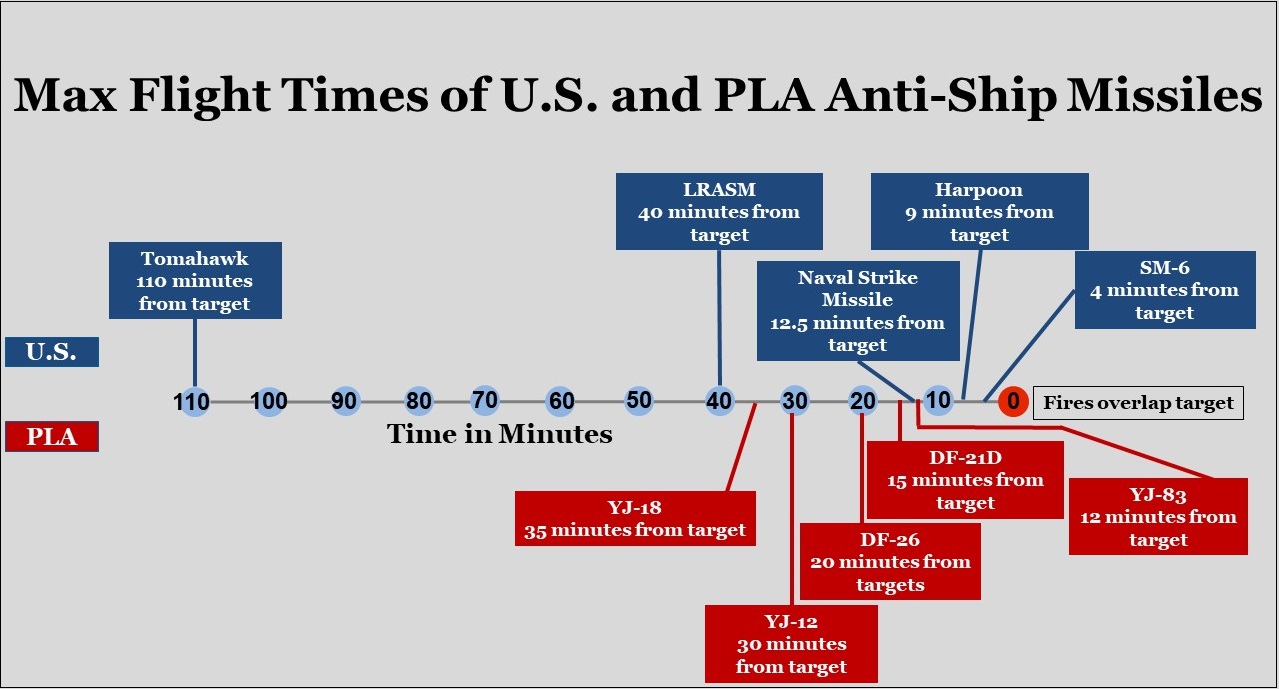
The advantages of “Quicksink”:
China has an advantage in terms of the number of anti-ship missiles it possesses.
However, they will increase production of “Quicksink” to destroy Chinese ships.
1. Deploy them in Quad allies and turn conventional bombs into guided weapons.
2. Use them in combination with the Japan Damaged Aircraft Missile (JDAM).
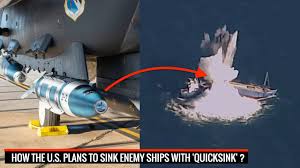
Upgrading conventional bombs to guided weapons:
The anti-ship guided bomb developed by the US Navy this time is said to be “low cost.”
It is now possible to turn conventional bombs without guidance into guided weapons.
Balance with the offensive power of the Chinese Navy:
Balance with the offensive power of the Chinese Navy is achieved by “Quicksink”
The attacking side generally needs three times the military force of the defending side to succeed.
Given this reality, it will have a strong deterrent effect on China.
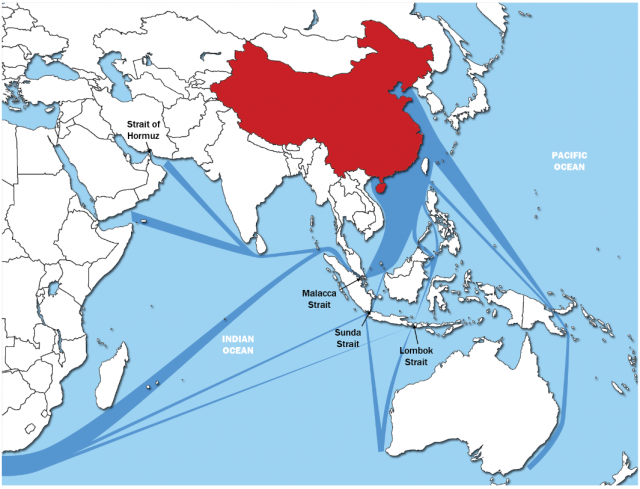
US Indo-Pacific Command:
Proceed with the deployment of thousands of “Quicksink”.
Deployments have already been completed, but the exact number is classified information.
Australian Strategic Policy Institute: Graham
China’s strategy is to restrict the movement of the US Navy in the Western Pacific and the First Island Chain.
1. In response, the US military will deploy anti-ship weapons in the Philippines and other places.
2. “Quicksink” can bring the South China Sea within range.
China claims sovereignty over the South China Sea:
1. China claims sovereignty over 90% of the South China Sea.
2. Meanwhile, five Southeast Asian countries and Taiwan have raised objections.
S. Rajaratnam School of International Studies, Singapore: Collin Koh
The new US strategy is extremely important.
Deploying anti-ship guided bombs in the Philippines will bring the entire South China Sea within range.
This is why China views the Philippines as an enemy.
The United States and the Philippines are reversing the tactics that China is aiming for.
https://hisayoshi-katsumata-worldview.com/archives/36820674.html